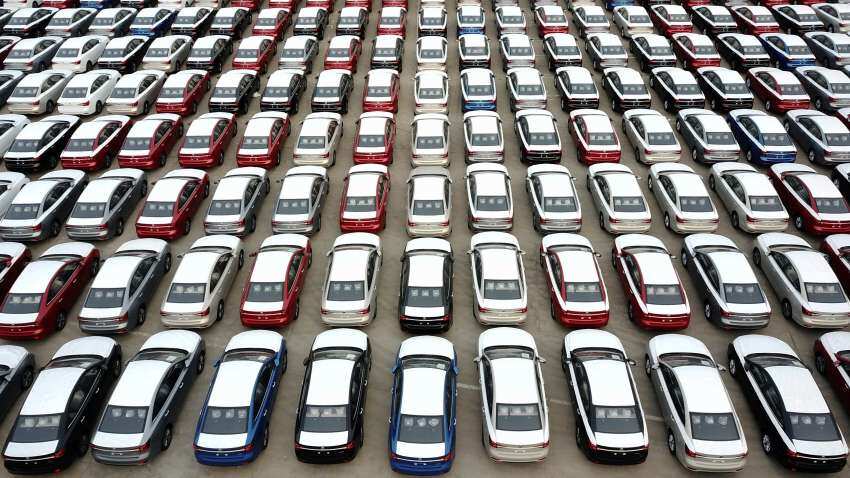Tata Motors upgrades cars range to conform with stricter emission norms; Maruti, M&M on course
From April 1, vehicles will need to have an on-board self-diagnostic device to monitor the real-time driving emission levels. The device will constantly monitor key parts for meeting emission standards such as the catalytic converter and oxygen sensors, to keep a close watch on emissions.

Auto major Tata Motors has upgraded its passenger vehicle portfolio to conform to stricter emission norms while Maruti Suzuki India and Mahindra & Mahindra are confident of transitioning their respective product range before the April 1 deadline.
The Indian automobile industry is currently working to make their products meet the second phase of Bharat Stage VI, equivalent to Euro-VI emission norms, in real-time driving conditions.
Four-wheeler passenger and commercial vehicles will need more sophisticated equipment to be added to meet the next level of emission standards. The second phase of BS-VI emission norms are set to kick in from April 1.
Car prices are also expected to rise as automobile companies are investing to add additional equipment in powertrains.
"Our portfolio has already transitioned to BS-VI phase 2 emission norms in February 2023, ahead of the regulation timelines. We have also enhanced the products with improved performance, added new technology features and increased warranty of our vehicles," Tata Motors Passenger Vehicles Managing Director Shailesh Chandra told PTI.
As far as pricing is concerned, part of the cost escalation arising out of this regulatory change has partially been passed on in the price increase announced in February, he noted.
"Remaining part may be passed on in the next price hike. Can't confirm any timeline on the same," Chandra said.
Mahindra & Mahindra President Automotive Division Veejay Nakra noted that all company models will comply with BS-VI phase 2 norms as per timelines set by the government.
"The cost increase is much lower than the cost of BS-IV to BS-VI transition and will be passed on to consumers in a phased manner," he added.
Maruti Suzuki India Executive Director Corporate Affairs Rahul Bharti stated that the auto major is fully committed to a cleaner environment and will complete the BS-VI phase-2 transition well in time.
"In fact, out of our total 62 applications, we had transitioned 31 applications to BS-VI phase-2 almost a year ahead of the compliance date," he added.
Even in 2019-20, Maruti Suzuki had upgraded many of its cars from BS-IV to BS-VI well before the compliance date, Bharti stated.
He noted that the Maruti Suzuki fleet currently has the least CO2 emission per car among all car manufacturers in the country which will keep getting lower.
From April 1, vehicles will need to have an on-board self-diagnostic device to monitor the real-time driving emission levels. The device will constantly monitor key parts for meeting emission standards such as the catalytic converter and oxygen sensors, to keep a close watch on emissions.
In a scenario wherein emissions exceed the parameters, the device will indicate through warning lights that the vehicle be submitted for a service.
Additionally, in order to control the level of fuel burnt, vehicles will also carry programmed fuel injectors, which would control the timing and amount of fuel injected into the petrol engine.
Even semiconductors used by the vehicle will have to be upgraded to monitor throttle, crankshaft positions, air intake pressure, temperature of the engine and the contents of the emissions from the exhaust (particulate matter, nitrogen oxide, CO2, sulphur), etc.
India had leapfrogged to BS-VI emission regime from BS IV norm with effect from April 1, 2020. The transition saw the domestic automobile industry pumping in around Rs 70,000 crore to upgrade its technology.
In 2016, the government asked the automobile industry to upgrade to BS-VI norms by April 2020.
The short deadline was unprecedented anywhere in the world as it was a leap from BS-IV to BS-VI. Deteriorating air pollution situation in various cities, including Delhi-NCR, was one of the prominent reasons to usher in stricter vehicular emission norms in the country.
Sulphur content is the major difference between BS-IV and BS-VI norms.
With PTI Inputs
Get Latest Business News, Stock Market Updates and Videos; Check your tax outgo through Income Tax Calculator and save money through our Personal Finance coverage. Check Business Breaking News Live on Zee Business Twitter and Facebook. Subscribe on YouTube.
RECOMMENDED STORIES

Power of Compounding: How long it will take to build Rs 5 crore corpus with Rs 5,000, Rs 10,000 and Rs 15,000 monthly investments?

SCSS vs FD: Which guaranteed return scheme will give you more quarterly income on Rs 20,00,000 investment?

Rs 3,500 Monthly SIP for 35 years vs Rs 35,000 Monthly SIP for 16 Years: Which can give you higher corpus in long term? See calculations

Looking for short term investment ideas? Analysts suggest buying these 2 stocks for potential gain; check targets
12:58 PM IST










 Tata Motors announces price hike on trucks and buses; shares under pressure
Tata Motors announces price hike on trucks and buses; shares under pressure Tata Motors to hike commercial vehicle prices by up to 2% from January 2025
Tata Motors to hike commercial vehicle prices by up to 2% from January 2025 Tata Motors showcases advanced technology at BaumaConexpo 2024
Tata Motors showcases advanced technology at BaumaConexpo 2024 Tata Motors shares rise over 1% as company announces third price hike in 2024
Tata Motors shares rise over 1% as company announces third price hike in 2024 Tata Motor to raise passenger vehicle prices by up to 4% from January 2025
Tata Motor to raise passenger vehicle prices by up to 4% from January 2025